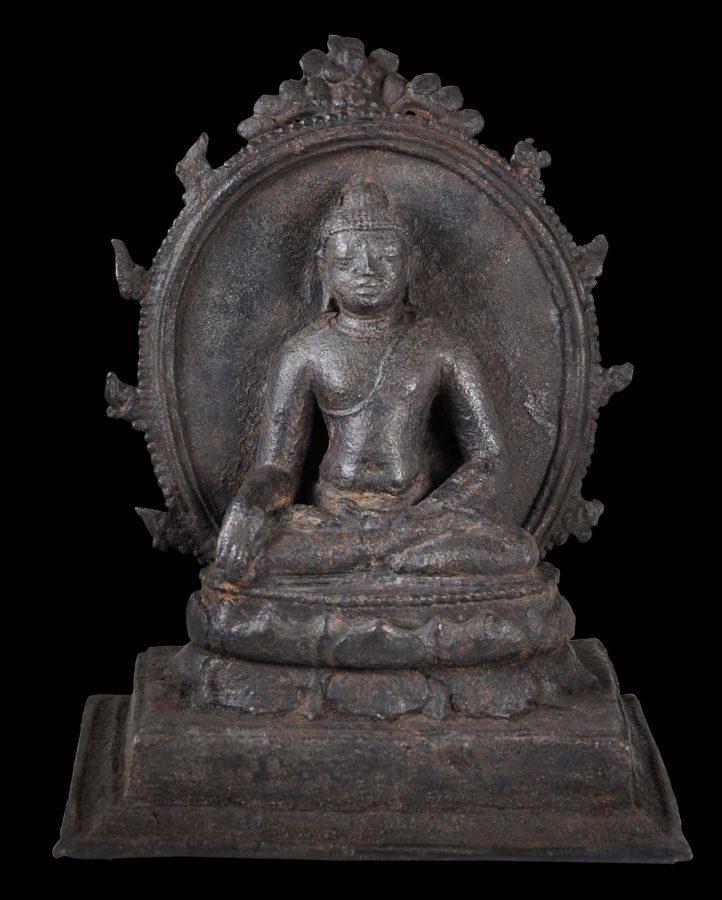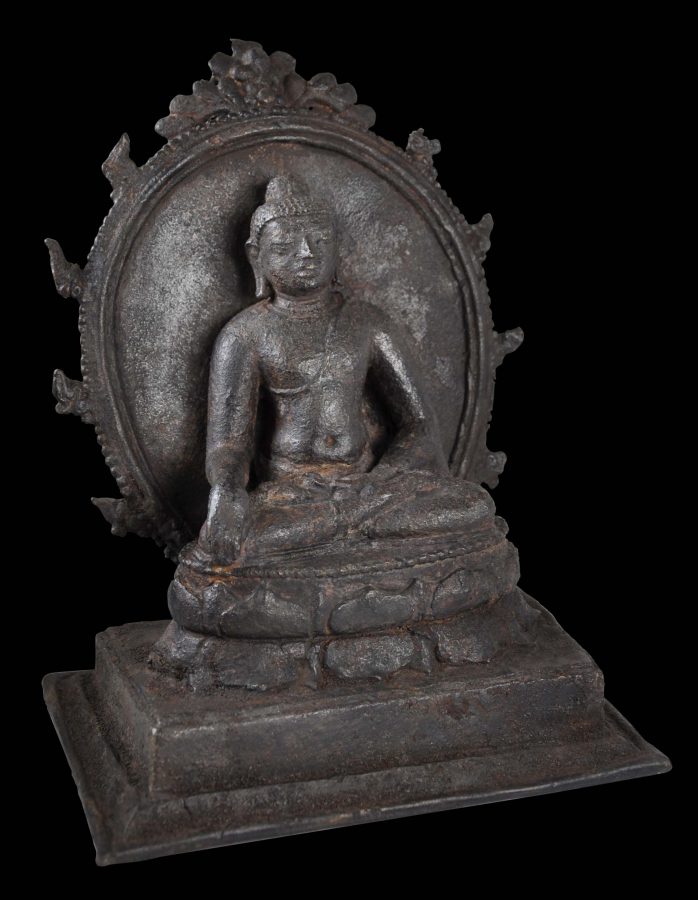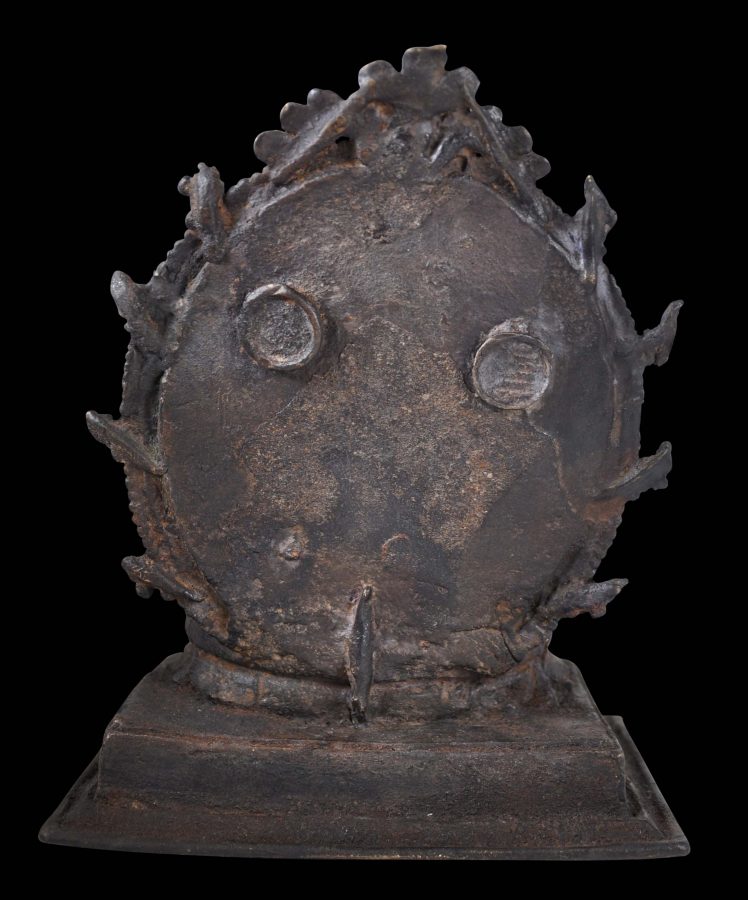Enquiry about object: 5364
Early Javanese Unusually Large Cast Bronze Buddha
Java or Sumatra, Indonesia, but most probably imported from northern India Classical Period, 8th century
height (without stand): 21.9cm, width: 17.1cm, depth: 11.8cm, weight: 2,576g
Provenance
Private Collection, London, UK.
This large Buddha is important for its size – it is much larger than most similar bronzes of this period. It shows the Buddha as a monk with his right shoulder uncovered and seated on a double-petal lotus throne atop a raised, rectangular platform. An oval aureole with stylised flames and a vegetal crest is fused to the rear of the platform. The Buddha has elongated ears, a sharp nose, and a prominent usnisa.
The figure is seated in vajrasana, with the right hand gesturing to the earth in the bhumisparsa mudra position. The posture, known as ‘calling the earth to witness’, represents the moment when the Buddha was seated in meditation under the Bodhi tree during the evening before his enlightenment. Mara asked him to name anyone who would give evidence that he had given alms, and the Buddha motioned to the earth with his right hand and said that the earth would bear witness to that – in a previous incarnation when he was known as Vessantara, he had given alms to such an extent that the earth had begun to quake.
Aspects of this image suggest it is from central Java. The style is similar to the stone images of the Buddha associated with Borobudur temple in central Java, although the example here also has strong Gupta influence in the face. However, similar bronzes have also been found in the Palembang region in Sumatra too – although the fact of finding bronzes in a location need not mean they were manufactured there. Indeed, the image has two unusual ‘seal’ marks cast onto the reverse. These are not typical at all for Javanese bronzes and more associated with some Indian bronzes of the period, so this element suggests that the image was cast in India and exported to what is now Indonesia in the 8th century.
The bronze has a deep, incontrovertible patina. A small section of the rear of the base has been repaired with cast bronze and been micro welded, the repair being largely invisible. Other minor repairs are to several of points of the ‘flames’ that radiate from the aureole. The Buddha sits on a high-quality, custom-made stand.
Lot 14 of Christie’s New York ‘Indian and Southeast Asian Art’ sale of March 20, 2002, comprised a related, larger image.
Read our short essay about Srivijaya bronzes.
References
Fontein, J., et al, The Sculpture of Indonesia, National Gallery of Art, Washington, 1990.
Kempers, A.J.B., Ancient Indonesian Art, CPJ ven der Peet (Amsterdam), 1959.
Lerner, M. & S. Kossak, The Lotus Transcendent: Indian and Southeast Asian Art from the Samuel Eilenberg Collection, The Metropolitan Museum of Art, New York, 1991.
van Lohuizen-de Leeuw, J.E., Indo-Javanese Metalwork, Linden-Museum Stuttgart, 1984.
Lunsingh Scheurleer, P., & M.J. Klokke, Ancient Indonesian Bronzes: A Catalogue of the Exhibition in the Rijksmuseum Amsterdam with a General Introduction, E.J. Brill, 1988.










